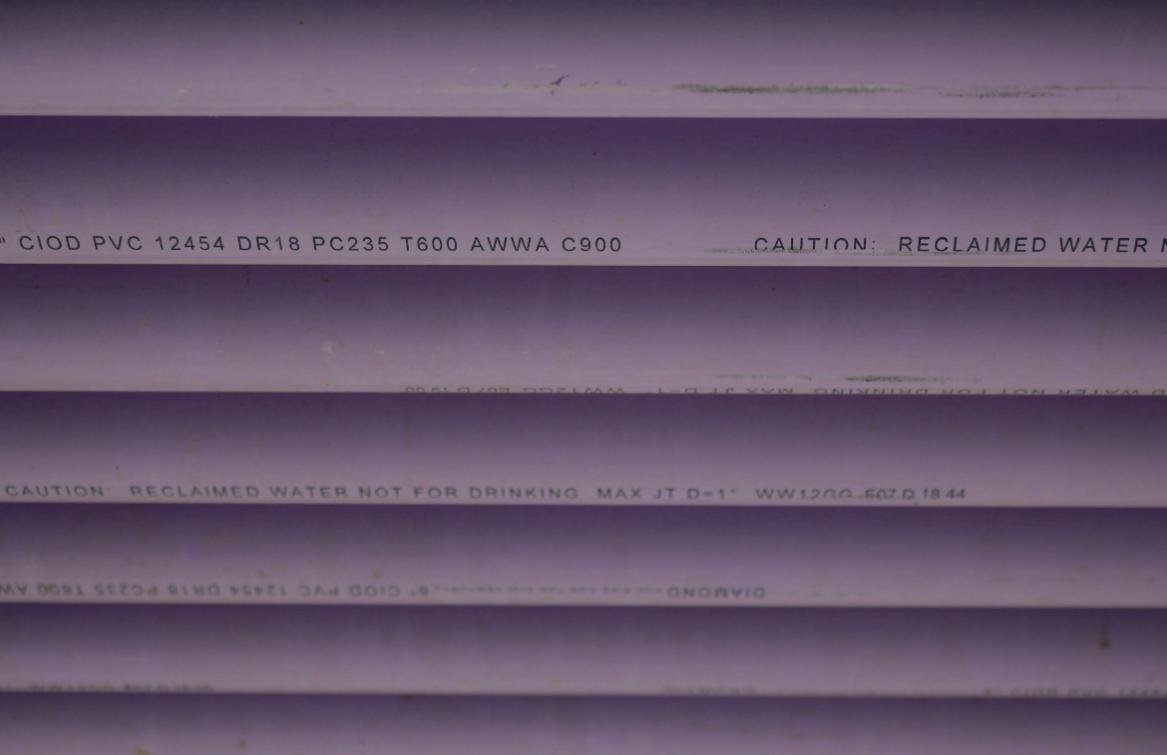Understanding PVC and Its Use in Bath Mats
Polyvinyl chloride (PVC) is a widely utilized synthetic plastic polymer known for its versatility and affordability. It is produced through the polymerization of vinyl chloride monomers and is distinguished by its strong, durable characteristics. Due to these properties, PVC has found a significant application in manufacturing bath mats. The inherent water-resistant nature of PVC makes it an ideal material for environments that experience high moisture levels, such as bathrooms.
One of the primary advantages of using PVC in bath mats is its durability. Unlike natural materials, PVC is resistant to wear and tear, ensuring that the mat can withstand constant exposure to water and foot traffic without degrading quickly. This prolonged lifespan helps consumers save on costs, as they will not need to replace their bath mats as frequently as those made from other materials.
Affordability is another aspect that makes PVC bath mats a popular choice among consumers. They offer a cost-effective solution without sacrificing quality. This accessibility enables a broader range of customers to incorporate them into their home decor while ensuring safety in wet conditions. The diverse color options and designs available further enhance their appeal, allowing individuals to find styles that seamlessly fit their personal preferences.
The manufacturing process of PVC bath mats typically involves the use of a combination of PVC resin, plasticizers, and stabilizers, which provides the necessary flexibility, softness, and strength. These mats can be found in various forms, including mats with suction cups on the underside to provide additional grip on slippery surfaces. Overall, PVC’s unique attributes contribute to its dominance in the bath mat market, addressing both functionality and aesthetic considerations effectively.
The Safety Concerns Associated with PVC
Polyvinyl chloride (PVC) is a widely used synthetic plastic polymer, prevalent in many household items, including bath mats. While PVC offers durability and affordability, there are significant safety concerns associated with its use, particularly regarding the potential release of harmful chemicals. This is primarily due to the production process and the additives incorporated into PVC products.
One of the key health risks linked to PVC is the presence of phthalates. These chemical compounds are commonly used as plasticizers to enhance the flexibility and durability of PVC products. Unfortunately, numerous studies indicate that phthalates can leach out of products into the environment and pose various health risks, particularly affecting hormonal systems. Prolonged exposure to high levels of phthalates has been associated with reproductive and developmental issues, as well as respiratory problems in vulnerable populations, such as children.
Another concerning aspect of PVC is the potential for dioxins to be released during its manufacturing process. Dioxins are highly toxic compounds that can accumulate in the food chain and have been linked to several serious health issues, including cancer, immune system suppression, and reproductive disorders. The environmental impact of dioxins is equally alarming, as they contribute to pollution and long-term ecological damage.
In light of these risks, consumers must be informed about the safety implications of using PVC products in their homes. Awareness of the potential release of harmful chemicals from bath mats and other household items can lead to more informed purchasing decisions. Opting for alternatives made from safer materials, such as natural rubber or cotton, can mitigate these health risks and minimize exposure to these hazardous substances. With an increased focus on health and safety, understanding the concerns associated with PVC is essential for all consumers.
Comparing PVC Mats with Alternative Materials
When selecting a bath mat, homeowners often grapple with the myriad of materials available on the market. Among these options, PVC mats stand out, but it is essential to compare them with alternatives such as rubber, cotton, and bamboo to make an informed decision. Each material has its unique attributes, benefits, and drawbacks concerning safety, environmental impact, cost, and maintenance.
PVC bath mats are popular due to their water-resistant properties and ease of cleaning. They are non-slip, thereby providing safety in wet environments, and are generally affordable. However, concerns have been raised regarding the environmental impact of PVC production, as it involves harmful chemicals that can be detrimental to the ecosystem. Nevertheless, many manufacturers are working towards making this material more sustainable.
Rubber bath mats provide an excellent alternative, offering natural water resistance and durability. They are often free from harmful chemicals, making them a safer choice for environmentally conscious consumers. Furthermore, rubber mats are known for their exceptional grip, ensuring safety during use. However, they can be relatively costly and may require more maintenance to keep them in optimal condition.
Cotton bath mats are favored for their softness and absorbency, providing comfort underfoot. They are machine washable, ensuring easy maintenance, yet they can retain moisture and may become a breeding ground for mold if not properly cared for. Additionally, cotton mats tend to have a shorter lifespan than PVC or rubber options, raising concerns regarding long-term cost-effectiveness.
Bamboo bath mats present a more eco-friendly choice, as bamboo is a renewable resource. They are naturally antimicrobial, promoting hygiene, and are aesthetically pleasing. However, bamboo mats may lack the non-slip features offered by PVC and rubber, which may be a crucial consideration for safety-conscious users.
In conclusion, the choice between PVC mats and alternative materials hinges on personal preferences and specific needs. By weighing the benefits and drawbacks of each option, consumers can make the most appropriate decision for their bathroom space.
Safety Certifications and Standards for Bath Mats
When it comes to ensuring the safety of bath mats, including those composed of polyvinyl chloride (PVC), various safety certifications and standards play a vital role. These certifications not only provide peace of mind to consumers but also signify that the product has undergone rigorous testing to meet specific safety criteria. One of the principal organizations overseeing product safety in the United States is the Consumer Product Safety Commission (CPSC). The CPSC regulates products to prevent injuries and ensure they are safe for public use, including items such as bath mats.
Another significant certification to consider is OEKO-TEX, a global testing and certification system for textiles. OEKO-TEX Standard 100 examines products for harmful substances, providing a quality assurance label that assures consumers that their bath mats are free from potentially harmful chemicals. This certification is particularly important for items that come in direct contact with the skin and are frequently exposed to moisture, such as bath mats.
In addition to OEKO-TEX, the GREENGUARD certification is also noteworthy. GREENGUARD focuses on minimizing indoor air pollution and ensuring that products produce low chemical emissions. Bath mats bearing the GREENGUARD certification indicate that they contribute to healthier indoor environments by meeting stringent chemical emissions standards. This is especially beneficial for households with children, the elderly, or individuals with sensitivities that can be exacerbated by poor air quality.
Understanding these certifications allows consumers to make informed decisions when selecting bath mats. Products that comply with safety certifications like CPSC, OEKO-TEX, and GREENGUARD are more likely to pose fewer risks and ensure a safer bathing experience. When shopping for bath mats, it’s essential to look for these labels, contributing to a more informed and conscientious purchase.
Cleaning and Maintaining PVC Bath Mats Safely
Maintaining the cleanliness of PVC bath mats is essential not only for aesthetics but also for ensuring a safe and hygienic bathing environment. Given the propensity of such mats to accumulate mold, mildew, and bacteria due to moisture, regular cleaning is imperative. Here are some practical tips on how to clean and maintain PVC bath mats safely.
First and foremost, it’s advisable to wash PVC bath mats weekly to prevent the buildup of harmful pathogens. For routine cleaning, a solution comprising warm water and mild detergent is effective. It is crucial to avoid harsh chemicals like bleach or ammonia, as these can compromise the integrity of the mat, leading to premature wear and tear. Instead, consider using eco-friendly cleaning products that are designed for synthetic materials; these will cleanse without causing damage.
For a deeper clean, remove the mat from the bathroom and soak it in a bathtub filled with warm water and a few drops of a gentle dish soap for approximately 30 minutes. After soaking, use a soft-bristle brush or cloth to scrub away any remaining stains or dirt. Rinse thoroughly with clean water to ensure that all soap residues are eliminated, as leftover cleaning agents can pose health risks if they remain on the mat.
To further mitigate mold growth, it’s pivotal to dry the bath mat in a well-ventilated area. Allowing the mat to air dry completely before placing it back in the bathroom is essential. Hanging it over a railing or outside under sunlight can help eliminate moisture effectively. Another preventative measure involves rotating the mat periodically, ensuring uniform exposure to air and reducing wear at specific spots.
In conclusion, taking the time to routinely clean and properly maintain PVC bath mats can significantly enhance their lifespan and promote a safer bathing environment. By practicing these cleaning methods, you will not only preserve the aesthetics of your bathroom but also safeguard your health.
Consumer Experiences: What People Are Saying
When considering the safety and usability of PVC bath mats, it’s useful to reflect on the experiences of actual consumers who have integrated these products into their bathrooms. Many users have shared their thoughts through reviews, shedding light on both the benefits and drawbacks of PVC bath mats.
A recurring theme in consumer feedback is the ease of cleaning these mats. Several users highlighted that PVC bath mats are generally easy to maintain, as they can be washed with soap and water, and many are machine washable as well. This aspect has proven advantageous for individuals who prioritize hygiene in their bathing spaces. In addition, users appreciated the quick-drying nature of PVC, which reduces the chance of mold and mildew development, enhancing overall safety.
On the downside, some consumers expressed concerns regarding the grip of certain PVC mats. A few reports indicated that some mats, particularly those with smooth bottoms, could slide around when wet, posing a potential hazard in the bathroom. Users recommend ensuring that any PVC bath mat has adequate suction cups or a textured surface to prevent slippage, thereby increasing safety when stepping out of the shower or bath. The ongoing maintenance practices, such as regular cleaning to eliminate slippery soap residues, were also emphasized.
Moreover, users have pointed out varying experiences concerning the comfort of PVC bath mats. While many found them satisfactory and supportive, a subset of consumers remarked that some mats might feel less cushioned compared to alternatives made from other materials, such as rubber or fabric. This inconsistency in comfort can influence overall satisfaction and user preference.
In conclusion, consumer experiences with PVC bath mats vary widely; however, feedback indicates that with proper selection and maintenance, they can offer a safe and convenient addition to any bathroom. Integrating user testimonials into decision-making can help potential buyers choose the right product for their needs.
Environmental Impact of PVC Bath Mats
Polyvinyl Chloride, commonly referred to as PVC, is a widely used plastic material in various household items, including bath mats. Understanding the environmental impact of PVC bath mats requires examining the entire lifecycle of PVC products, from production to disposal. The manufacturing process for PVC involves significant energy consumption and toxic emissions, contributing to air and water pollution. Furthermore, the majority of PVC production is reliant on non-renewable resources, such as petroleum, which raises concerns regarding resource sustainability.
During its lifespan, PVC is favored for its durability, but this feature also presents challenges. While PVC bath mats may be long-lasting, they do not biodegrade easily. This characteristic leads to considerable waste accumulation in landfills. Plastic waste is a pressing environmental issue, as it can take hundreds of years to decompose. The disposal of PVC products often results in the release of harmful chemicals into the environment, particularly when incinerated, which further exacerbates pollution concerns.
Additionally, the recycling of PVC bath mats poses significant challenges. Although PVC can theoretically be recycled, in practice, the rates of PVC recycling are low. Many recycling facilities are not equipped to handle PVC, and even if they are, the quality of recycled PVC is often inferior to that of virgin material. This results in a limited market for recycled PVC products, ultimately discouraging recycling efforts.
For environmentally conscious consumers, the sustainability of PVC manufacturing is also critical. The industry is adopting some measures to reduce its impact, including the use of alternative raw materials and improved manufacturing processes. However, the advancements are still in their infancy, and comprehensive solutions for PVC’s environmental footprint remain elusive. Consumers looking for sustainable bath mat options may want to consider alternatives such as natural fibers or biodegradable materials, which offer less detrimental environmental effects.
Alternatives to PVC Bath Mats for a Safer Choice
When considering safer alternatives to PVC bath mats, it is crucial to explore materials that prioritize health, environmental impact, and functionality. Fortunately, there are various non-toxic and eco-friendly options available, ensuring consumers can make informed choices.
One popular alternative is rubber bath mats made from natural rubber, which are free from harmful chemicals often found in synthetic materials. Natural rubber provides excellent traction and durability while being biodegradable, making it an environmentally friendly choice. Additionally, these mats are easy to clean and maintain, offering practical benefits alongside their safety features.
Cotton bath mats represent another viable option. As a natural fiber, cotton is soft, absorbent, and hypoallergenic, making it suitable for sensitive skin. Unlike PVC mats, cotton mats can be machine washed, allowing for a hygienic and convenient cleaning process. It is advisable to select organic cotton to ensure that the production process avoids toxic dyes and pesticides, thus enhancing safety.
Bamboo bath mats are increasingly gaining popularity due to their aesthetic appeal and eco-friendly properties. Made from sustainable bamboo, these mats provide a unique look while being naturally resistant to mold and mildew. Their solid construction allows for easy drainage, helping to maintain a dry and safe bathroom environment.
For those seeking versatility, a microfiber bath mat is a practical alternative. Microfiber is known for its quick-drying capabilities and superior absorbency. These mats are lightweight and easy to wash, providing both safety and convenience. Moreover, many microfiber products are designed to be non-toxic and free from harsh chemicals.
In conclusion, choosing alternatives to PVC bath mats can significantly enhance safety in the bathroom. Non-toxic materials such as natural rubber, cotton, bamboo, and microfiber not only prioritize health but also offer functional and stylish options for consumers. By opting for these alternatives, one can create a safer and more pleasant bathing environment.
Conclusion: Is a PVC Bath Mat Right for You?
As we have discussed in the preceding sections, the choice of a bath mat is an important consideration for both safety and hygiene. PVC bath mats present certain advantages and disadvantages that consumers must weigh carefully. While these mats offer a non-slip surface and are readily available in the market, they also raise potential concerns regarding health and environmental impact due to the materials used in their production.
One key factor to consider is the safety provided by a PVC bath mat. The non-slip properties can greatly reduce the risk of slipping in wet environments, making them a practical option for bathrooms. However, it is essential to ensure that the mats are maintained properly to prevent the buildup of mold and mildew, which can pose health risks. Regular cleaning and replacement can enhance their safety and longevity, serving as a vital consideration for consumers who prioritize a clean and hygienic environment.
Moreover, the environmental impact of purchasing PVC bath mats cannot be overlooked. The production of polyvinyl chloride can result in the release of harmful chemicals, and the disposal of PVC products at the end of their life cycle raises ecological concerns. Consumers who value sustainability may wish to explore alternative materials, which are often made from natural or recycled fibers and can represent a more environmentally friendly choice.
Ultimately, the decision of whether a PVC bath mat is right for you hinges on a balance of these factors. Evaluating your own priorities regarding safety, comfort, health, and environmental stewardship will guide you towards making an informed choice. Such reflection can ensure that your selected bath mat aligns with your values and meets your specific needs.






